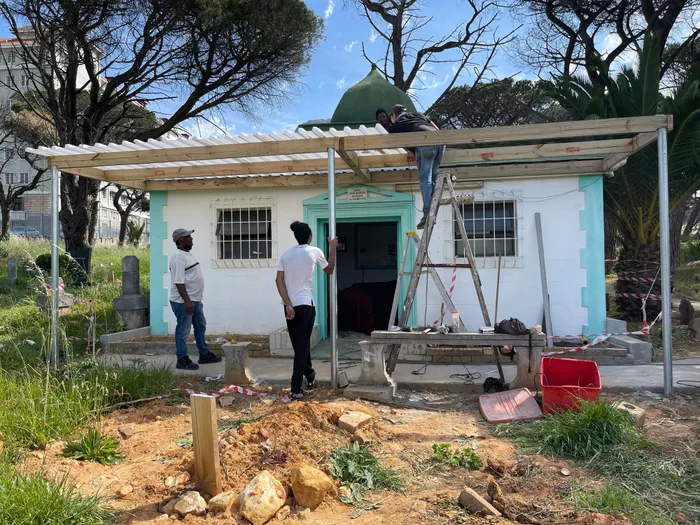City’s Muslim shrines get heritage nod

The kramat currently under construction and set to reopen in two weeks.
Ten Cape Town kramats, along with a grave in Mowbray cemetery, known as the Circle of Tombs, have been declared national heritage sites.
A formal announcement was made on Friday by the Cape Mazaar Society, a non-profit organisation, and Vidamemoria Heritage consultants, at the Sayed Abdul Malik Kramat, in Vredehoek.
The kramats, or mazaars, are holy shrines that mark the graves of influential Muslims. The others granted national heritage status by the SA Heritage Resources Agency’s (Sahra) are located at Signal Hill, Oudekraal, Constantia, Simon’s Town and Macassar.
The Cape Mazaar Society, Vidamemoria, Sahra and the Shahmahomed Trust have campaigned since the 1980s for the holy sites to receive national heritage status in the province.
The two burial sites in Mowbray cemetery are included in the announcement: the kramat of Sayed Moegsien bin Alawieal Aidarus and the grave of Sheikh Abduragiem ibn Muhammad AlIraqi.
Cape Mazaar Society spokesman Yusuf Khan Dalwai said: “The recognition of the heritage significance of the circle honours the Auliyah (“Friends of Allah”). The kramats are not only places of spirituality but are tangible signs of the emergence and spread of the Islamic faith throughout the Western Cape and the rest of South Africa.”
The president of the Cape Mazaar Society, Sheikh Abduraghman Alexander, said it was a significant day, not only for the Muslim community of the Cape but for all South Africans.
“The kramats are symbols of defiance to the colonial masters and the injustices of the past. They inspire us to stand for justice,” said Mr Alexander.
SA History Online notes that the history of the kramats has its roots in the Dutch invasion of places such as India, Ceylon and Java. The leaders of those who resisted were banished to the Cape. Citizens of Malay, Indian, Javanese, Bengalese and Arabian origins were also sold into slavery during this time, and these slaves and sultans started the first Muslim communities in the Cape.
According to the Cape Mazaar Society, Sheikh Abduragiem came from what is now Iraq and was recognised for his piety and wealth of knowledge. He wrote about the teachings of Islam in Afrikaans with the use of Arabic vocabulary, which was unique.
Sayed Moegsien was recognised for his character and participation towards the spread of Islam at the time.
The chairman of the Muslim Cemetery Board, Faizal Sayed, said the Mowbray cemetery had been in existence since around 1886, but it could be older.
“Sayed Moegsien was a saint that was buried in the kramat just over 100 years ago. It's an honour for us to house a heritage site where this prominent figure was buried within the Mowbray area,” he said.
“The gravesites of people who are pious and who played a role towards building society are very important. Their memory and history need to be preserved because it has an important effect on the community going forward,” said Mr Sayed.
Mowbray Cemetery Board member Shameemah Salie said: “The Mowbray site being declared as a national heritage site adds not only to the value of the area but to the preservation of our heritage. It encourages and invites people to come to the cemetery because of this particular heritage site.”
She added: “This preservation is adding so much value to the Muslims of today and the generations before us, it allows for a connection and link that many of us have forgotten.”
There is construction work happening at the kramat of Sayed Moegsien, and it will be open to the public in two weeks.
Anyone is welcome to visit a kramat. If you do so, you should remove your shoes before entering, be quiet and respectful, turn off your cellphone, cover up (women should wear a scarf) and do not smoke or use alcohol.

